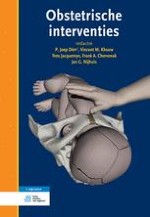2017 | OriginalPaper | Hoofdstuk
12. Techniek van de sectio caesarea
Auteurs : S. A. Scherjon, J. G. Nijhuis, W. J. A. Gyselaers
Gepubliceerd in: Obstetrische interventies
Uitgeverij: Bohn Stafleu van Loghum
2017 | OriginalPaper | Hoofdstuk
Auteurs : S. A. Scherjon, J. G. Nijhuis, W. J. A. Gyselaers
Gepubliceerd in: Obstetrische interventies
Uitgeverij: Bohn Stafleu van Loghum
Print ISBN: 978-90-368-1743-1
Elektronisch ISBN: 978-90-368-1744-8
Copyright: 2017
